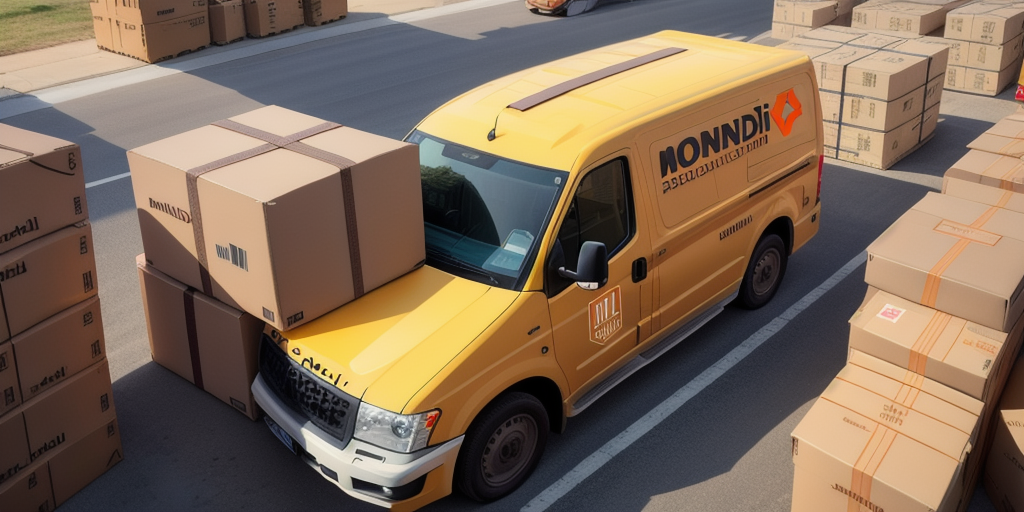Over the past few years, FedEx, the global courier and delivery services company, has experienced a number of challenges that have impacted its overall business operations and financial performance. In this article, we will delve into the history of FedEx, analyze the challenges the company has faced in recent times, and examine the steps they have taken to address these issues.
Understanding the History of FedEx: From a Small Courier Company to a Global Corporation
Founded in 1971 by businessman Fred Smith, FedEx started off as a small courier company that delivered packages overnight. The company expanded rapidly, and by the 1980s, it had become a global corporation with a diverse range of services. However, in recent years, FedEx has faced a number of challenges that have put its growth and profitability in jeopardy.
One of the biggest challenges that FedEx has faced in recent years is the rise of e-commerce and the increasing demand for fast and reliable delivery services. With the growth of online shopping, FedEx has had to adapt its business model to meet the changing needs of consumers. This has included investing in new technologies and expanding its network of distribution centers to ensure that packages can be delivered quickly and efficiently.
The Impact of COVID-19 on FedEx's Business Operations
The COVID-19 pandemic has had a significant impact on FedEx's business operations. As governments around the world implemented lockdowns and travel restrictions, consumer demand for shipping services increased significantly. However, while FedEx saw an increase in volume, it also experienced significant disruptions to its supply chain due to government restrictions and reduced capacity on cargo flights.
Additionally, the pandemic also resulted in a significant decrease in the use of commercial air travel, which significantly impacted FedEx's air cargo operations. The company was forced to increase its use of cargo-only flights, which resulted in higher operating costs, reduced capacity, and less efficient delivery times.
Furthermore, the pandemic also led to a shift in consumer behavior, with more people opting for online shopping and home delivery services. This resulted in a surge in demand for residential deliveries, which posed a challenge for FedEx's delivery network. The company had to adapt quickly to meet the increased demand, which included hiring more staff and investing in new technology to improve delivery efficiency.
Moreover, the pandemic also highlighted the importance of supply chain resilience and the need for contingency planning. FedEx had to quickly adapt to changing circumstances and implement new safety protocols to protect its employees and customers. The company also had to work closely with its suppliers and partners to ensure the continuity of its operations and maintain its high level of service.
Analyzing the Challenges Faced by FedEx in the Current Market Scenario
Apart from the pandemic, FedEx has faced various other challenges in the current market scenario. Chief among these is the intense competition it faces from Amazon and UPS, who have both been investing heavily in their own shipping and logistics operations. This has led to a significant decline in revenue for FedEx, as more and more customers switch to these newer, more streamlined shipping services.
In addition, the rising popularity of e-commerce has also presented various challenges for FedEx. Unlike traditional brick-and-mortar stores, e-commerce retailers often require shipment of individual items, which can be more expensive to ship and harder to manage in terms of logistics. This has put pressure on FedEx to continuously modernize its business operations and adapt to the changing market landscape.
Another challenge that FedEx has faced in the current market scenario is the increasing demand for sustainable and eco-friendly shipping options. Customers are becoming more conscious of their carbon footprint and are looking for shipping companies that prioritize sustainability. FedEx has responded to this challenge by implementing various initiatives to reduce its environmental impact, such as investing in electric vehicles and using more sustainable packaging materials. However, this shift towards sustainability has also required significant investments and changes in operations, which has added to the challenges faced by FedEx in the current market scenario.
Examining the Impact of E-commerce on FedEx's Shipping Business Model
With the rise of e-commerce, traditional shipping and logistics models have become less relevant. Consumers today expect fast, reliable shipping that is both cost-effective and sustainable. As a result, FedEx has had to continuously invest in new technologies and innovations to keep up with these changing demands.
One of the ways FedEx has responded to this challenge is by offering new services, like drone delivery and same-day delivery, to better compete with e-commerce giants like Amazon. The company has also invested heavily in its digital interfaces, making it easier for customers to track their packages and communicate with customer service representatives.
Another way that FedEx has adapted to the impact of e-commerce on its shipping business model is by partnering with e-commerce platforms and retailers. By integrating its shipping services with these platforms, FedEx is able to offer a more seamless and convenient experience for customers. This has also allowed the company to expand its reach and tap into new markets.
Furthermore, FedEx has recognized the importance of sustainability in the e-commerce era. The company has set ambitious goals to reduce its carbon footprint and has implemented various initiatives to achieve these goals, such as investing in alternative fuel vehicles and optimizing its delivery routes. By prioritizing sustainability, FedEx is not only meeting the expectations of environmentally conscious consumers but also positioning itself as a leader in the industry.
Investigating the Impact of Tariffs on Cross-border Shipping and its Effect on FedEx
Intensifying trade tensions between US and China have resulted in a number of tariffs being placed on goods being shipped across borders. This has had a significant impact on FedEx, as the company's cross-border shipping business generates a significant amount of its revenue.
Rising tariffs have led to an increase in shipping costs, which has made it more expensive and less attractive for customers to ship their goods overseas. This has directly impacted FedEx's bottom line, as the company struggles to compete with other shipping providers that are able to offer lower prices to customers.
In addition to the impact on FedEx's revenue, the tariffs have also caused disruptions in the global supply chain. Many businesses that rely on cross-border shipping have had to adjust their operations and find alternative suppliers or markets to avoid the higher costs. This has led to increased uncertainty and volatility in the market, which can have long-term effects on the economy.
Furthermore, the tariffs have also sparked debates about the effectiveness of protectionist trade policies. While some argue that tariffs can protect domestic industries and create jobs, others argue that they can lead to retaliation from other countries and ultimately harm the overall economy. As the trade tensions continue to escalate, it remains to be seen what the long-term effects will be on cross-border shipping and the companies that rely on it, such as FedEx.
Understanding How Labor Disputes Have Affected FedEx's Operations and Brand Image
Over the past few years, FedEx has also been embroiled in a number of labor disputes with its workforce, particularly its pilots. These disputes have resulted in a number of strikes and disruptions to FedEx's operations, which has led to a decline in customer satisfaction and reputation.
In response, FedEx has implemented a number of initiatives aimed at improving employee satisfaction and reducing the likelihood of further labor disputes. These initiatives include implementing better scheduling procedures, increasing employee pay, and offering more flexible work arrangements.
What Steps is FedEx Taking to Modernize its Technology Infrastructure for Enhanced Efficiency?
FedEx has always been at the forefront of technological innovation in the delivery services industry. However, in recent years, the company has had to accelerate its efforts to keep up with changing customer demands and competitive pressures.
One of the ways FedEx is seeking to modernize its technology infrastructure is by investing in new technologies like artificial intelligence, machine learning, and the Internet of Things (IoT). These technologies will enable the company to better track packages, optimize delivery routes, and automate certain tasks, ultimately resulting in a more efficient and streamlined delivery process.
Examining the Role of Sustainability in FedEx's Business Model and Future Plans
Sustainability has become an increasingly important issue for customers and business owners alike. As one of the largest shipping companies in the world, FedEx has a responsibility to operate in an environmentally-friendly manner and reduce its carbon footprint.
To this end, the company has implemented a number of sustainability initiatives aimed at reducing its environmental impact. These initiatives include investing in alternative fuel vehicles, reducing packaging waste, and implementing energy-efficient technologies in its facilities.
How is FedEx Addressing Issues Related to Customer Service and Satisfaction?
In light of its recent challenges, FedEx has been taking steps to improve customer service and satisfaction. This includes implementing new policies and procedures that make it easier for customers to communicate with customer service representatives, as well as offering more flexible delivery options and faster delivery times.
The company has also been investing in its digital interfaces, making it easier for customers to track their packages and communicate with representatives through online channels like social media and email.
Analyzing Financial Performance: Profit Margins, Revenue, and Stock Prices.
Despite its recent challenges, FedEx continues to be a major player in the global shipping and logistics market. In 2019, the company generated over $69 billion in revenue and employed over 570,000 people worldwide. However, its financial performance has been impacted by a number of factors, including the pandemic, rising competition, and trade tensions between the US and China.
In the wake of these challenges, FedEx has been implementing various cost-cutting measures and operational efficiencies aimed at improving its financial performance. These include reducing its workforce and consolidating its business operations, as well as divesting from non-core business units.
What Does The Future Hold For Fedex: Opportunities & Threats.
Looking ahead, FedEx faces both opportunities and threats. On the one hand, the company is well-positioned to benefit from the continued growth of e-commerce, which will likely result in increased demand for shipping and logistics services. Additionally, new technologies like artificial intelligence and machine learning present new opportunities for the company to optimize its delivery operations and improve efficiency.
However, FedEx also faces a number of threats, including rising competition from Amazon and UPS, ongoing labor disputes, and uncertain global trade conditions. Nevertheless, the company remains dedicated to adapting to the changing market landscape and implementing new initiatives to improve its operations and financial performance.
Can FedEx Regain Its Position As A Leader In The Shipping Industry?
Despite the challenges it has faced in recent years, FedEx remains one of the largest and most recognizable shipping companies in the world. By continuing to invest in new technologies, modernize its business operations, and improve customer service, the company can regain its position as a leader in the shipping industry. However, this will require a continued commitment to innovation, efficiency, and customer satisfaction.
In conclusion, FedEx has faced a number of challenges in recent years, including increased competition, labor disputes, and supply chain disruptions caused by the COVID-19 pandemic. However, by implementing new initiatives to modernize its technology infrastructure, improve its customer service, and reduce its environmental impact, the company remains well-positioned to succeed in the global shipping and logistics industry.








